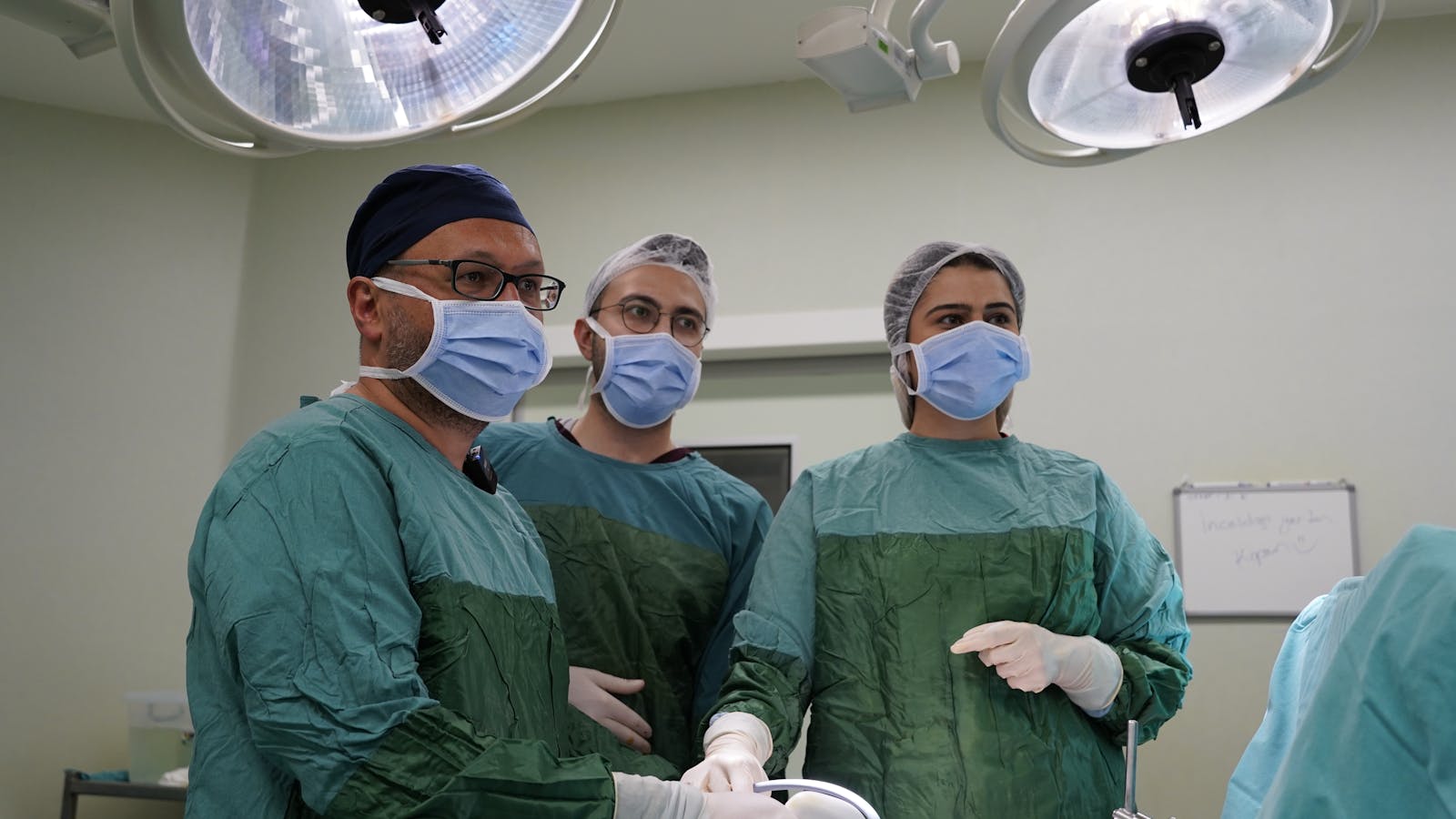As we explore the nuances of lumbar rhizotomy, a minimally invasive procedure designed to alleviate chronic lower back pain, it’s crucial to contemplate its evolution, the indications for use, and its potential risks and complications. The procedure’s effectiveness in interrupting the transmission of pain signals without causing complete loss of sensation has made it a preferred choice for persistent lower back pain, especially after other non-surgical treatments have proved unsuccessful. The complexity of this topic warrants a thorough investigation to fully comprehend its implications in modern medical practice.
Understanding Lumbar Rhizotomy
One must understand that lumbar rhizotomy is a surgical procedure aimed at disrupting the nerve roots in the lumbar spine, greatly reducing pain for patients experiencing severe spinal conditions. This technique, also known as neurotomy or rhizolysis, involves the use of heat, cold, or chemical substances to ablate the nerve roots, thereby disrupting the transmission of pain signals to the brain.
Despite its potential benefits, several misconceptions surround this procedure. A common rhizotomy misconception is that it is a cure-all treatment for all types of back pain. However, its effectiveness is primarily seen in cases of facet joint pain and less so in discogenic pain. Another misconception is that it results in complete numbness in the treated area. While it does reduce sensation, it does not result in total loss of feeling.
Regarding insurance coverage, policies may vary greatly. Many insurance providers will cover lumbar rhizotomy if it is deemed medically necessary and other less invasive treatments have failed. However, patients are advised to check their specific policy details and pre-authorization requirements. Consultation with the insurance provider and the treating physician is crucial to make sure that both the procedure and the associated costs are clearly understood.
Historical Development of Lumbar Rhizotomy
The evolution of rhizotomy procedures offers a rich context for understanding current practice in lumbar rhizotomy. As we trace the trajectory from rudimentary to advanced techniques, the impact of technological innovations and medical insights become apparent. In particular, the refinement of modern lumbar rhizotomy techniques signifies major strides in neurosurgery, enhancing both the safety and efficacy of this critical intervention.
Evolution of Rhizotomy Procedures
Tracing back to its roots in the 19th century, the rhizotomy procedure has undergone significant evolution, particularly with the development of lumbar rhizotomy. Early techniques were often crude, leading to Rhizotomy history controversies due to unpredictable outcomes and high complication rates. The evolution of this procedure was driven by the need for safer and more effective alternatives to manage chronic pain. As the medical field advanced, so did the understanding of the spinal structure, enabling targeted interventions. Rhizotomy began to distinguish itself from other procedures in its ability to selectively sever problematic nerve roots, thereby reducing pain without extensive damage. However, the comparison of Rhizotomy vs. other procedures continues to fuel research to optimize patient outcomes.
Modern Lumbar Rhizotomy Techniques
As Rhizotomy procedures evolved, a particularly noteworthy advancement was the development of modern lumbar rhizotomy techniques, which have transformed the approach to managing chronic back pain. These technique variations, born from Rhizotomy advancements, involve the use of radiofrequency energy to selectively destroy nerve roots in the lumbar spine, thereby disrupting pain signals. The procedure is performed under local anesthesia with the patient in a prone position. An electrode needle is introduced into the target area under fluoroscopic guidance, ensuring precision. The nerve is then stimulated to confirm its identity before radiofrequency ablation is applied. This approach has greatly improved patient outcomes, reducing postoperative pain and recovery time, while maintaining a high success rate in alleviating chronic back pain.
The Anatomy Involved
In understanding the process of lumbar rhizotomy, one must first explore the intricate anatomy of the lumbar spine. The spinal anatomy basics involve the vertebral column, which in the lumbar region consists of five large and robust vertebrae (L1 to L5). These vertebrae support the majority of the body’s weight and are pivotal in movement, flexion, and extension of the lower back.
A nervous system overview reveals that each vertebra is associated with a pair of spinal nerves that exit through spaces known as intervertebral foramina. These nerves carry sensory and motor information between the body and the central nervous system. Within these nerves, the dorsal root ganglion contains the cell bodies of sensory neurons, which transmit pain signals. A lumbar rhizotomy targets these specific nerve endings to alleviate chronic back pain.
The procedure involves the selective severing of problematic nerve roots, aiming to interrupt pain signals before they reach the brain. It’s important to understand that the lumbar area’s anatomy is complex, with an intricate web of muscles, ligaments, and nerves, all interplaying within a confined space. Each component contributes to the overall function and stability of the spine, making detailed knowledge of the anatomy essential for successful lumbar rhizotomy.
Indications for Lumbar Rhizotomy
Lumbar rhizotomy is typically indicated for patients suffering from chronic lower back pain that hasn’t responded to conservative treatments such as physical therapy or medication. The primary objective of this procedure is to relieve pain by disrupting nerve roots in the lumbar spine that are transmitting pain signals to the brain.
One of the most common rhizotomy misconceptions is that it’s a first-line treatment for all forms of back pain. However, it is usually considered only after non-surgical treatments have failed to provide adequate relief, and diagnostic tests have clearly identified the facet joints as the primary pain source. It’s important to underscore that rhizotomy is not a solution for pain caused by conditions such as herniated discs, spinal stenosis, or sciatica.
Concerning insurance coverage, most insurance plans cover lumbar rhizotomy, considering it as a medically necessary procedure for chronic back pain relief. However, coverage can vary widely among plans, so patients are advised to check with their insurance providers for specifics on coverage and out-of-pocket costs. For patients without insurance, many hospitals offer payment plans or financial assistance.

Pre-Procedure Preparations
Before undergoing a lumbar rhizotomy, patients must adhere to certain preparatory measures to guarantee excellent results and minimize potential risks. These measures encompass both dietary considerations and medication interactions, which are fundamental aspects of the pre-procedure preparations.
From a dietary perspective, patients are typically advised to fast for a certain period before the procedure, although the exact duration may vary depending on the physician’s recommendations. This is to prevent any complications during anesthesia. It is also essential to maintain proper hydration before the procedure, avoiding alcoholic or caffeinated beverages.
In terms of medication interactions, patients should provide their healthcare provider with a detailed list of all currently taken medications, including prescription drugs, over-the-counter medicines, herbal supplements, and vitamins. This information is vital to avoid potential adverse effects or interactions that could compromise the procedure’s efficacy or safety. Certain medications, particularly blood thinners, may need to be discontinued or adjusted prior to the procedure to reduce the risk of excessive bleeding.
Patients are also encouraged to abstain from smoking as it can interfere with the healing process post procedure. By adhering to these guidelines, patients can ensure a smoother procedure and recovery.
The Step-by-Step Procedure
To fully grasp the intricacies of a lumbar rhizotomy, it is essential to elucidate the procedure step-by-step, detailing each stage with precision and clarity. The operation begins with the patient lying face down on a special table that provides X-ray guidance. A local anesthetic is applied to the skin and deeper tissues. Following this, a thin needle electrode is directed towards the sensory nerves in the lumbar region.
Once the needle is properly positioned, it is connected to a radiofrequency generator. This device sends an electrical current to heat the nerve, disrupting its ability to transmit pain signals. This part of the procedure is what distinguishes a rhizotomy from conventional surgery, debunking one of the prevalent rhizotomy myths that it involves extensive tissue removal or physical severing of nerves.
Throughout the procedure, the patient’s essential signs are monitored closely, ensuring safety and maximum comfort. The entire process typically takes about 30 to 90 minutes, largely depending on the number of nerves being treated.
Post-Procedure Care and Recovery
Upon completion of a Lumbar Rhizotomy, there are essential steps and measures to guarantee a robust recovery trajectory. The first aspect to address is the management of pain post-procedure, an element that necessitates thorough strategies for effective mitigation. Additionally, understanding the necessary steps for recovery is crucial to optimize the healing process and prevent potential complications.
Managing Pain Post-Procedure
After undergoing a lumbar rhizotomy, effective management of post-procedural pain forms an essential aspect of the patient’s recovery process. Various pain medication options are available to help manage this discomfort, including non-steroidal anti-inflammatory drugs (NSAIDs), opioids, and over-the-counter analgesics, depending on the intensity and duration of pain. The choice of medication should be guided by the patient’s individual needs and the physician’s recommendation. It’s also important to take into account potential drug interactions and side effects.
Emotional support post-procedure plays a significant role in pain management too. Psychological interventions, such as cognitive-behavioral therapy, can assist patients in handling pain and stress effectively, thereby promoting a smoother recovery. Regular follow-ups with the healthcare provider are also essential for monitoring progress and adjusting the pain management strategy as needed.
Essential Recovery Steps
In the wake of a lumbar rhizotomy, several recovery measures and post-procedure care strategies, beyond pain management, should be carefully followed to guarantee peak healing and restoration of normal function.
- Understanding Rhizotomy Misconceptions: To ensure top-notch recovery, patients must be well-informed about the procedure and its outcomes. Dispelling rhizotomy misconceptions is vital to set realistic expectations.
- Physical Rehabilitation: A structured physical therapy regimen should be commenced to improve strength, flexibility, and mobility.
- Emotional Recovery: Given the nature of the procedure, emotional recovery is just as essential as physical healing. Counseling or support groups can be beneficial.
- Follow-up Evaluations: Regular doctor appointments should be scheduled to monitor progress and make necessary adjustments to the recovery plan.

Potential Risks and Complications
While lumbar rhizotomy is generally a safe procedure, it is not devoid of potential risks and complications, which may include infection, bleeding, nerve damage, or worsening of pain. Due to Rhizotomy’s global prevalence, a wide spectrum of outcomes and complications has been documented. Notwithstanding, the risk profile remains comparable to other minimally invasive spinal procedures.
However, the complexity of insurance coverage can exacerbate the challenges faced by patients. Some insurers may deem rhizotomy as an experimental procedure, therefore not providing coverage. This underscores the need for a detailed preoperative discussion between the patient and healthcare provider about the potential financial implications.
Infection, although rare, poses a significant risk that can lead to serious complications. Inadequate sterility during the procedure may introduce bacteria to the surgical site, leading to infection.
Bleeding and nerve damage, while less common, are associated with the insertion of the needle. Inexpert needle placement can inadvertently puncture a blood vessel or directly injure a nerve, which can exacerbate the patient’s pain.
Lastly, a small subset of patients may experience a paradoxical increase in pain post-procedure. This phenomenon, known as deafferentation pain, can be more challenging to manage than the original pain.
Assessing the Effectiveness
Despite the potential risks, the evaluation of lumbar rhizotomy’s effectiveness hinges on a careful examination of pain relief, functional improvement, and overall patient satisfaction post-procedure. This evaluation must take into account several vital factors.
- Pain Relief: The primary aim of lumbar rhizotomy is to provide substantial and lasting relief from chronic lower back pain. A successful procedure results in a significant reduction in pain scores, often reducing reliance on pain medications.
- Functional Improvement: Beyond pain relief, a successful procedure improves the patient’s mobility and ability to perform daily tasks without discomfort or restrictions.
- Patient Satisfaction: Overall patient satisfaction is a key indicator of the procedure’s effectiveness. This includes gauging the patient’s perception of improvement and their willingness to recommend the procedure to others.
- Cost and Insurance Coverage: The rhizotomy cost is an essential factor for many patients. A cost-effective procedure, combined with adequate insurance coverage, enhances the perceived value and satisfaction derived from the procedure.
Conclusively, the effectiveness of a lumbar rhizotomy is not solely determined by the clinical outcomes but also includes cost-effectiveness, insurance considerations, and patient-reported satisfaction.
Patient Testimonials and Experiences
Drawing from the individual experiences of patients who have undergone lumbar rhizotomy provides a unique perspective on the procedure’s effectiveness and impact on quality of life. Personal perspectives often reveal a reduction in chronic lower back pain, contributing to improved mobility and overall wellness. Many patients express a significant enhancement in their daily functioning, hailing rhizotomy as a life-changing intervention.
However, alongside these positive testimonials, it’s important to address rhizotomy misconceptions. A common fallacy is the perception of rhizotomy as a ‘quick fix’. While the procedure can indeed offer immediate relief, its best benefits typically manifest after weeks or even months. Patients should be prepared for a recovery period that includes physical therapy and gradual increase in activities.
Another misconception is the belief that lumbar rhizotomy is a remedy for all types of back pain. It’s crucial to understand that this procedure specifically targets facet joint pain, and may not alleviate discomfort caused by other conditions like herniated discs or spinal stenosis. Hence, an accurate diagnosis is crucial before considering this procedure.
Through understanding these patient experiences and debunking misconceptions, we can nurture informed expectations and decision-making regarding lumbar rhizotomy.
Alternatives to Lumbar Rhizotomy
In the field of pain management, several viable alternatives to lumbar rhizotomy exist, each with unique methodologies and potential benefits. These alternatives can be particularly beneficial for patients seeking non-surgical interventions or those interested in holistic pain management.
- Epidural Steroid Injections: These are non-surgical interventions that involve the administration of corticosteroids into the epidural space of the spine to alleviate inflammation and pain.
- Physical Therapy: A holistic approach that helps patients manage pain through exercises designed to improve strength, flexibility, and mobility.
- Acupuncture: An ancient Chinese medical practice that involves the insertion of fine needles into specific points on the body to alleviate pain and promote healing.
- Chiropractic Adjustments: This non-surgical intervention involves the manual manipulation of the spine to improve alignment, reduce nerve irritability, and enhance function.
These alternatives represent a broad spectrum of methodologies, from the traditional to the holistic, allowing for individualized treatment plans that cater to the patient’s specific needs and preferences. As with any medical procedure, the potential benefits and risks of these alternatives should be discussed thoroughly with a healthcare provider.
Frequently Asked Questions
What Is the Average Cost of a Lumbar Rhizotomy Procedure?
The cost of the procedure in question varies, with an average range typically between $1,000 to $3,000. The price can be influenced by factors such as Rhizotomy procedure risks and the effectiveness of Lumbar Rhizotomy.
Does Health Insurance Typically Cover Lumbar Rhizotomy?
Insurance eligibility for medical procedures often depends on the individual’s specific plan. Coverage variations can occur among providers, so it is essential to consult with your insurance company for detailed information on benefits and coverage.
How Often Is a Repeat Lumbar Rhizotomy Treatment Necessary?
The necessity for a repeat treatment depends on Rhizotomy effectiveness and individual patient response. However, due to Lumbar Rhizotomy risks, it’s typically not repeated unless symptoms reoccur, which can happen in 20-30% cases within 2-3 years.
Are There Specific Exercises or Physical Therapies Recommended After Lumbar Rhizotomy?
Post-procedure, specific exercises and physical therapies are highly recommended to expedite rhizotomy recovery time and mitigate post-rhizotomy complications. These typically focus on strengthening the back and core to support the affected lumbar region.
Are There Any Lifestyle Changes Necessary After Undergoing Lumbar Rhizotomy?
After undergoing any significant medical procedure, lifestyle adjustments are typically required. These may include modifications to one’s post-procedure diet, restrictions on travel, and other considerations specific to the nature of the procedure.

